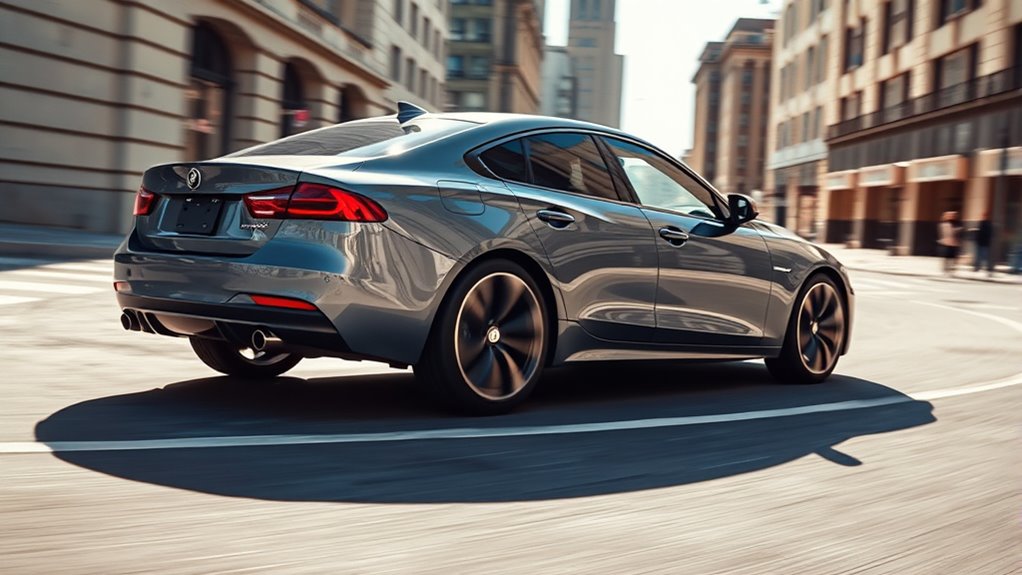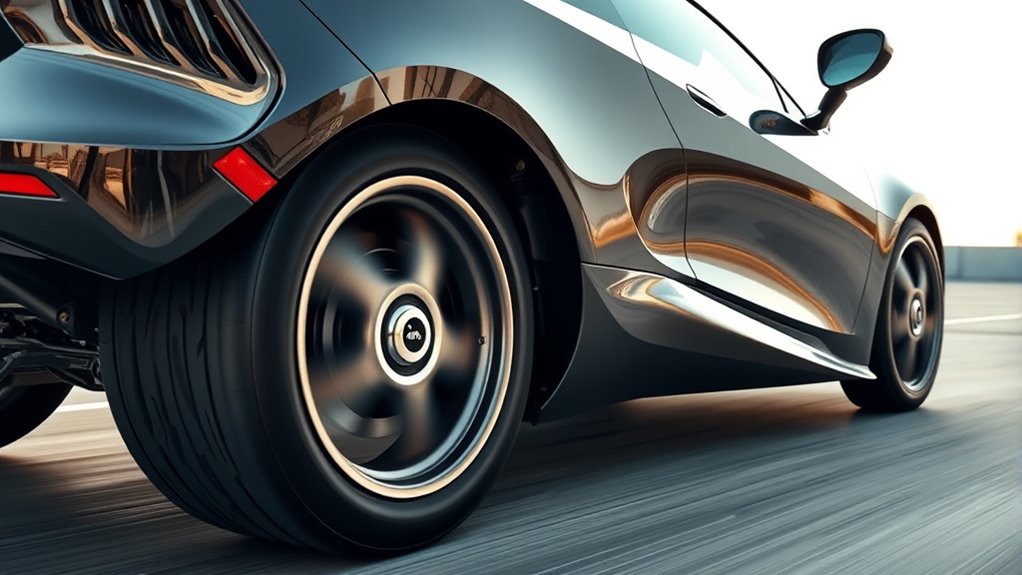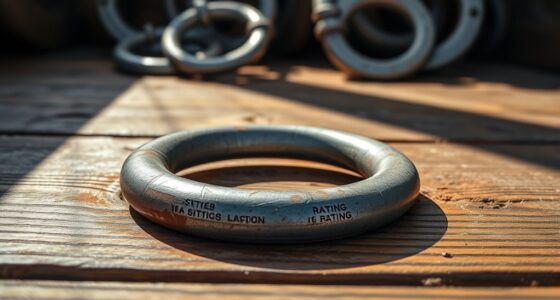Your vehicle’s turning circle depends mainly on its wheelbase and drivetrain setup. A shorter wheelbase lets you make tighter turns, making parking and maneuvering tight spaces easier. Drivetrain also plays a role; front-wheel drive vehicles typically have smaller turning radii, while rear-wheel or all-wheel drive models may need more space to turn around. Understanding how these factors work together can help you pick the right vehicle—continue exploring to learn more about optimizing maneuverability.
Key Takeaways
- Shorter wheelbases generally result in a smaller turning radius, enhancing maneuverability in tight spaces.
- Front-wheel drive vehicles often have smaller turning circles due to more precise steering control.
- Longer wheelbases increase the turning radius, requiring more space for sharp turns.
- Drivetrain configurations like all-wheel or four-wheel drive can influence steering dynamics and turning circle size.
- Additional factors such as steering rack length and suspension geometry also affect overall turning capabilities.

When it comes to maneuvering your vehicle, understanding how turning circle relates to wheelbase and drivetrain can make a big difference. The turning circle, or the smallest circular turn your vehicle can make, directly impacts how easily you can navigate tight spaces, parking spots, and sharp turns. It’s a critical factor that influences your driving experience, especially in urban environments where space is limited.
The key components that determine this are your vehicle’s wheelbase—the distance between the front and rear axles—and the drivetrain configuration, which affects how power is distributed to the wheels.
Your wheelbase plays a significant role because a shorter wheelbase generally results in a tighter turning radius. Imagine a vehicle with a compact wheelbase; it can pivot more sharply because the wheels don’t have to move as far to complete a turn. Conversely, vehicles with longer wheelbases tend to require more space to turn around, producing a larger turning circle.
This becomes especially evident in large trucks, SUVs, or luxury sedans, where the wheelbase is inherently longer. So, if you frequently navigate crowded city streets or need to park in tight spots, a vehicle with a shorter wheelbase can offer more agility and ease of maneuvering.
Drivetrain configuration further influences the turning circle. Front-wheel drive vehicles often boast a smaller turning radius because the front wheels are responsible for steering and power delivery, allowing for more precise control during sharp turns.
In contrast, rear-wheel drive vehicles tend to have a slightly larger turning circle because the rear wheels are primarily responsible for propulsion, which can limit how tightly they can turn.
All-wheel drive or four-wheel drive systems complicate this further; since power can be sent to all four wheels, the steering dynamics change and can either slightly increase or decrease the turning circle depending on how the system is designed.
It’s also essential to understand that other factors, like steering rack length, suspension geometry, and tire size, contribute to the overall turning circle.
But focusing on wheelbase and drivetrain gives you a clear foundational understanding of how your vehicle behaves during turns.
When you’re selecting a vehicle for city driving or tight navigation, these elements matter because they determine how comfortably and efficiently you can maneuver. Recognizing how these aspects interact helps you choose a vehicle that suits your driving needs, making daily driving less stressful and more confident.
Frequently Asked Questions
How Does Tire Width Impact Turning Circle?
Tire width directly impacts your vehicle’s turning circle by affecting steering effort and clearance. Wider tires create more contact with the road, which can increase resistance and make turning more difficult, potentially enlarging your turning radius.
Conversely, narrower tires reduce friction and resistance, allowing for tighter turns. So, if you want a smaller turning circle, choosing narrower tires can help, but keep in mind it might affect grip and stability.
Does Vehicle Weight Affect Turning Radius?
A heavy vehicle often has a larger turning radius, and weight can make steering less responsive. You might find that extra weight causes the tires to grip more firmly, increasing the effort needed to turn sharply.
Can Modifications Improve Turning Circle?
Yes, modifications can improve your vehicle’s turning circle. You can swap out larger tires for smaller ones, which reduces the overall diameter and makes turning easier.
Adjusting suspension components or upgrading steering systems can also enhance maneuverability.
Keep in mind, though, that some modifications might affect other aspects like stability or clearance, so it’s best to consult a professional before making changes to guarantee safety and ideal performance.
How Does Steering Angle Influence Turning Circle?
You’ll find that increasing your steering angle considerably reduces your turning circle, making tight turns easier.
For example, a 30-degree increase in steering angle can decrease your turning radius by several feet, improving maneuverability. When you turn the steering wheel more sharply, your wheels pivot more, allowing you to make tighter turns with less space.
This adjustment is especially helpful in parking or steering narrow streets, enhancing your driving precision.
What’s the Impact of Suspension Type on Turning Radius?
You’ll notice that suspension type substantially impacts your vehicle’s turning radius. Independent suspensions, like in most modern cars, allow wheels to move separately, reducing the turning radius and improving maneuverability.
Solid axles, found in some trucks, tend to increase the turning radius because they connect wheels directly, limiting their movement.
Conclusion
So, next time you marvel at a car’s tiny turning circle, remember it’s all about wheelbase and drivetrain magic—because who knew that tiny, nimble turns are just a clever trick of engineering? Now, you can impress friends by knowing that a longer wheelbase isn’t just for show; it’s secretly plotting to make your parking adventures just a tad more challenging. Cheers to engineering brilliance making your life both easier and more entertaining!









